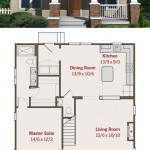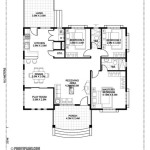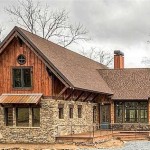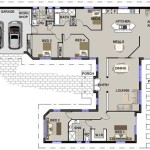How to Find the Original Floor Plan of Your House for Free in Portland
Discovering the original floor plan of a house can be an invaluable asset for homeowners. It provides a glimpse into the property's history, clarifies structural intricacies, and aids in planning renovations or repairs. For Portland homeowners seeking this information without incurring expenses, several avenues exist. This article outlines methods to potentially locate the original floor plan of a property within the city of Portland, Oregon, focusing on publicly accessible resources and strategies that require minimal or no financial investment.
Finding a historical record such as a floor plan can sometimes be a serendipitous discovery, but it is generally a process that requires persistence and a systematic approach. The availability of such documentation is dependent on when the house was built, whether permits were filed, and how well those documents were preserved and indexed over time. Keep in mind that even with diligent searching, success is not guaranteed. Some records may simply be lost, destroyed, or never created in the first place.
Navigating the Portland Bureau of Development Services (BDS) Records
The Portland Bureau of Development Services (BDS) is the primary repository for building permits and associated documents within the city. These records, if they exist for a property, often contain valuable information, including the original floor plan. The BDS offers several ways to access this information, some of which are free to utilize.
The first step involves utilizing the BDS online permitting system. This system allows users to search for permits associated with a specific address. While not all permits have digital copies of the associated floor plans readily available online, the search itself can reveal permit numbers and filing dates. This information is crucial for requesting further information from the BDS.
Once potential permit numbers are identified, contacting the BDS directly is the next logical step. The BDS customer service representatives can assist in determining if the permit records contain a floor plan. While obtaining a physical copy of the plan may incur a nominal fee for printing, simply inquiring about its existence and availability is generally free. It is advisable to have the property address, any known permit numbers, and a brief description of the information that is being sought readily available when contacting the BDS.
Another option is to visit the BDS Development Services Center in person. This allows direct access to public computers where permits and related documents can be searched. Furthermore, BDS staff are available to provide guidance and assistance in navigating the records. Keep in mind that during peak hours, wait times and access to computers may be limited.
It's important to understand the limitations of the BDS records. Older properties, particularly those built before the widespread adoption of permitting processes, may not have records available. Furthermore, not all permits include floor plans. Interior alterations or accessory dwelling unit (ADU) permits, for example, are more likely to contain floor plans than permits for minor repairs or maintenance.
Exploring the Multnomah County Records
While the BDS primarily handles building permits, Multnomah County also maintains records that might indirectly lead to finding a floor plan. The County Assessor's Office, for example, maintains property tax records that may contain sketches or diagrams of the property. These sketches are typically intended for assessment purposes and may not be as detailed as a formal floor plan, but they can offer a general overview of the layout.
Accessing these records is generally possible through the Multnomah County website or by visiting the County Assessor's Office. Online searches are typically free, but obtaining printed copies of documents may involve a fee. It's worth noting that the accuracy and completeness of these records can vary, particularly for older properties. The assessor's sketches are primarily focused on square footage and the exterior footprint of the building, and interior details are often limited or absent.
The Multnomah County Library also holds historical archives which could be potentially useful. Old newspapers, city directories, and historical photographs sometimes offer clues about the original design and construction of a property. Examining these resources might not directly reveal a floor plan, but could provide contextual information that leads to other sources. The library's digital collections are often accessible online, offering a convenient way to search for relevant information from home.
Genealogical societies in the Portland area are another resource to consider. These societies often collect and preserve historical documents related to local families and properties. Memberships might offer access to more exclusive resources, but many societies also offer free events and workshops where information on researching property history can be obtained. While a direct floor plan discovery might be unlikely, the information gleaned could lead to alternative sources of information.
Leveraging Neighborhood and Historical Associations
Portland is known for its strong neighborhood identity and active historical preservation efforts. Local neighborhood associations and historical societies can be valuable resources for uncovering information about a property's history, including the potential existence of a floor plan.
Many neighborhood associations maintain archives of local historical documents, photographs, and oral histories. These archives may contain information about the original construction of houses in the neighborhood, including architectural plans or sketches. Contacting the neighborhood association and inquiring about their historical records is a worthwhile endeavor.
Historical societies, such as the Oregon Historical Society, are dedicated to preserving and promoting the history of the region. While their focus is broader than individual properties, their collections may include architectural drawings or historical records related to the development of Portland's neighborhoods. Access to these resources may require membership or a fee for research services, but initial inquiries about the availability of specific information are generally free.
Furthermore, reaching out to long-time residents of the neighborhood can sometimes yield surprising results. Long-time residents might have anecdotal knowledge about the property's history, including renovations or additions that have been made over the years. They might even possess old photographs or documents that depict the original floor plan. Engaging with the community and asking questions can be a valuable, and free, way to uncover leads.
Online forums and social media groups dedicated to Portland history or specific neighborhoods can also be useful platforms for seeking information. Posting a request for information about the property's history and asking if anyone has access to the original floor plan could potentially connect with individuals who possess relevant information.
When approaching these resources, it’s beneficial to have some background information about the property, such as the year it was built, any known previous owners, and any significant historical events that may have impacted the property. This information helps focus the search and makes it easier for others to provide assistance.
It is important to reiterate that finding the original floor plan of a house in Portland for free is not guaranteed. The availability of such records depends on various factors, including the age of the property, the thoroughness of record-keeping at the time of construction, and the preservation efforts of various organizations. However, by systematically exploring the resources outlined above, Portland homeowners significantly increase their chances of uncovering this valuable piece of property history.
Persistence and patience are key. The search for a floor plan can be a time-consuming process, requiring multiple inquiries and explorations of different resources. Even if the original floor plan cannot be found, the search itself can provide valuable insights into the property's history and the development of the surrounding neighborhood.
Ultimately, understanding the limitations and managing expectations are crucial. While the resources outlined offer potential avenues for discovering a floor plan without cost, relying solely on these methods may not always yield the desired result. In some cases, engaging a professional researcher or architect to conduct a more thorough investigation may be necessary, but those options generally involve incurring a financial investment.

Building Permit Plans Portland Gov

Building Permit Plans Portland Gov

Building Permit Plans Portland Gov

Building Permit Plans Portland Gov

House And Building History

Eastmoreland Portland Or Homes For Real Estate Redfin

How To Use Google Earth Or Virtual Visualize A New House Lot Part 1 Scott Hanselman S Blog

Eastmoreland Portland Or Homes For Real Estate Redfin

How To Use Google Earth Or Virtual Visualize A New House Lot Part 1 Scott Hanselman S Blog

Tiny House Plans The Project
Related Posts








